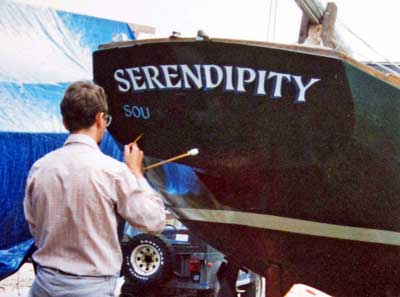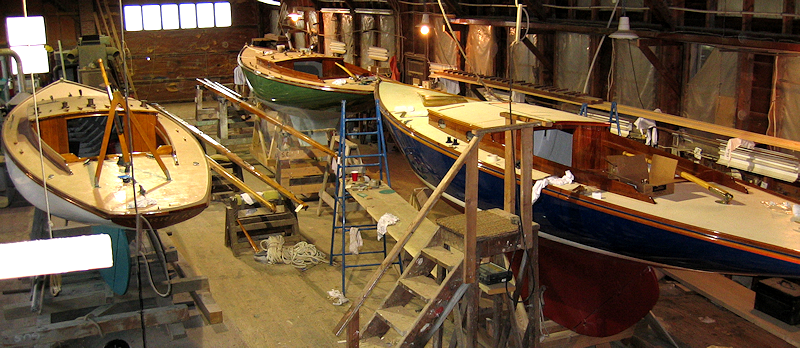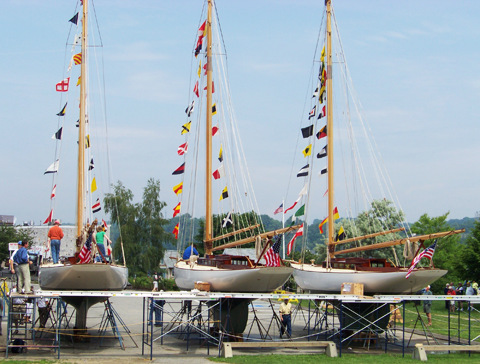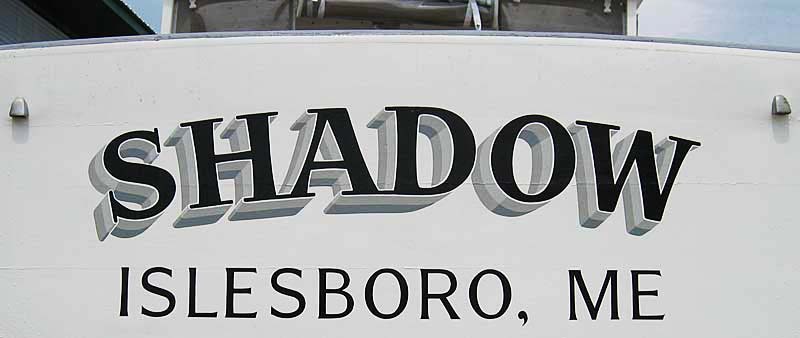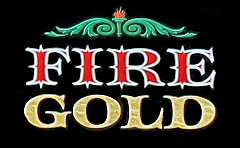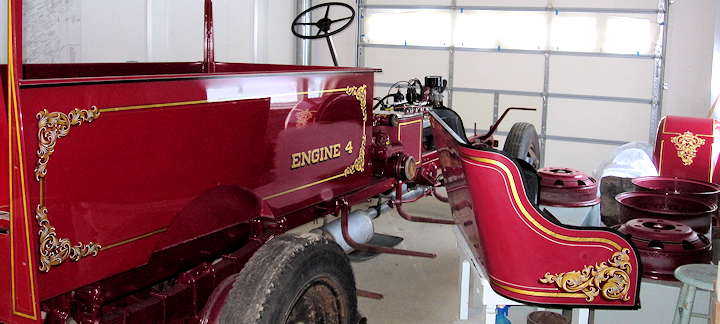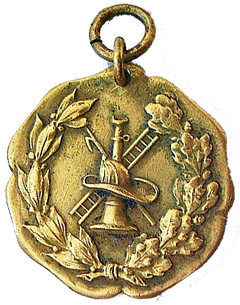
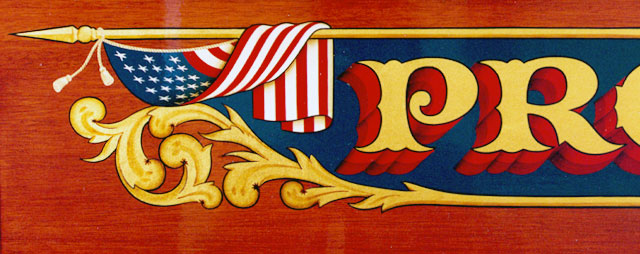
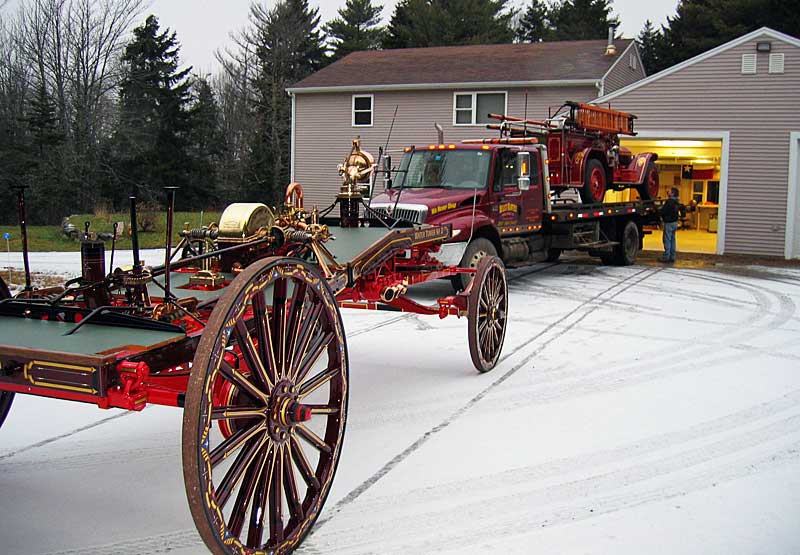
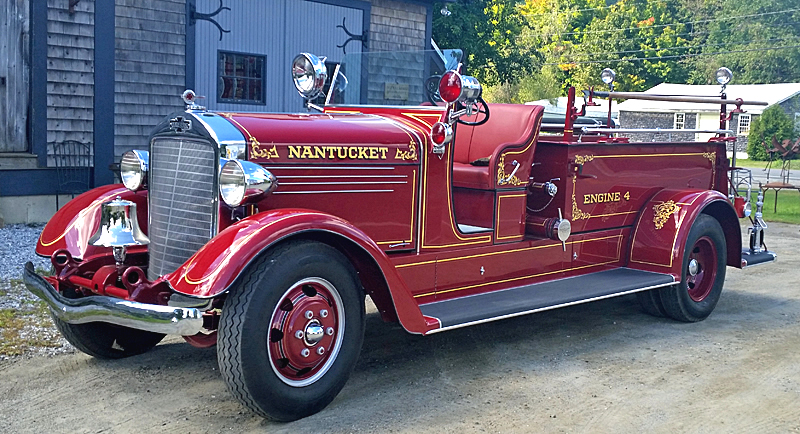

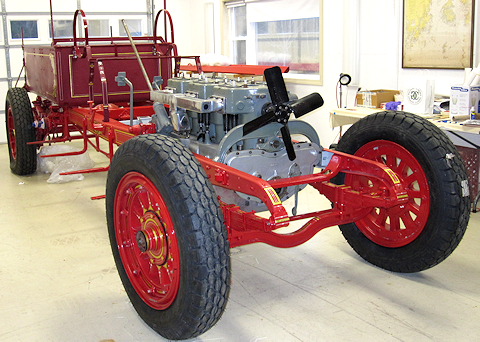
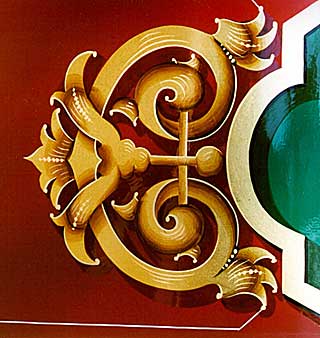
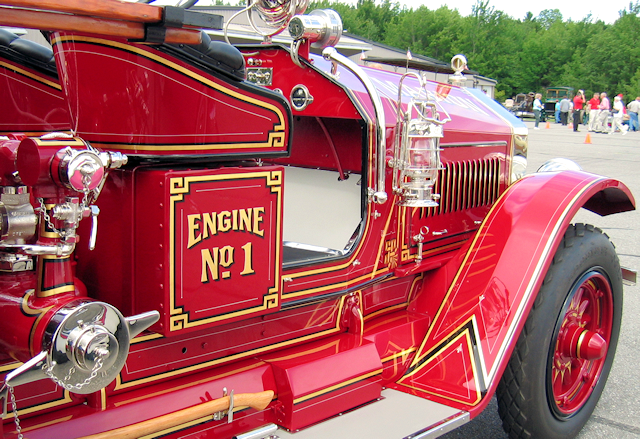
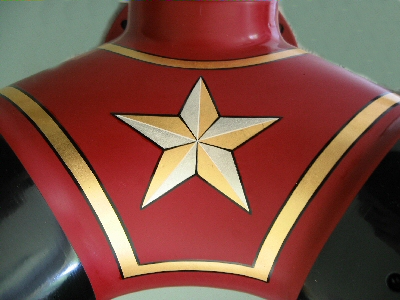
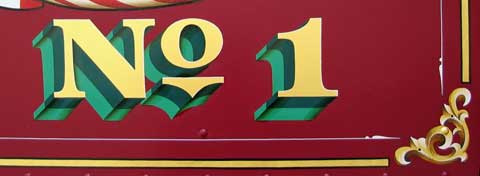
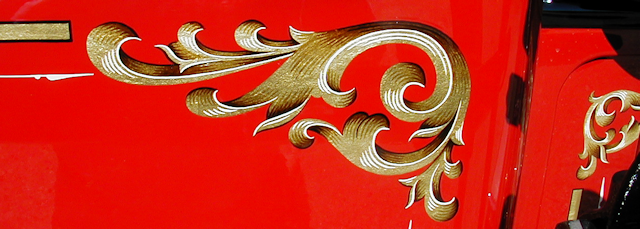
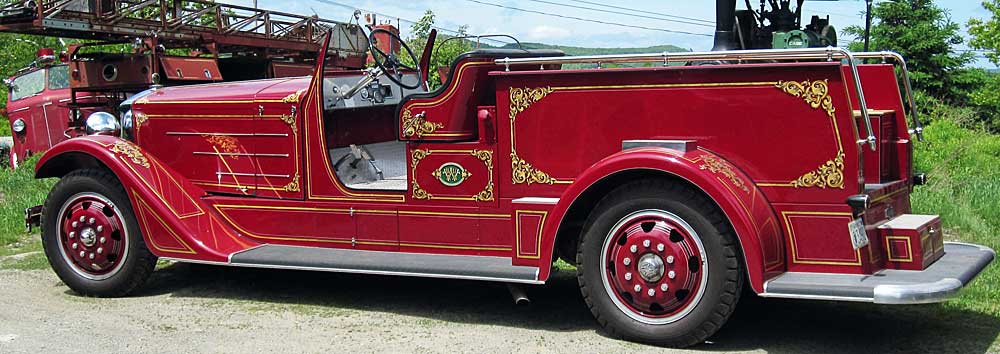
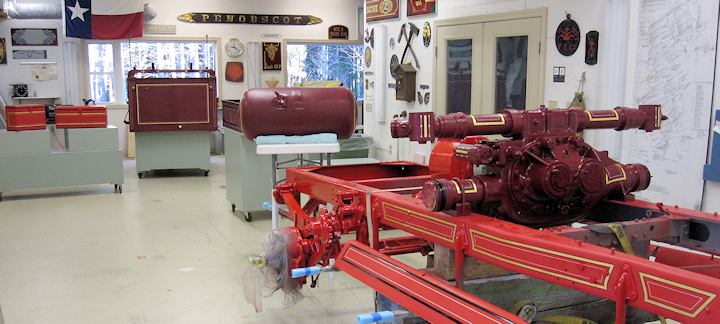
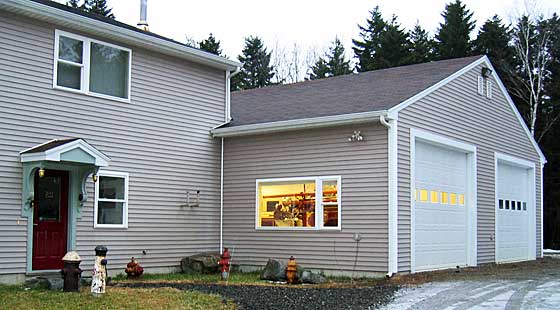
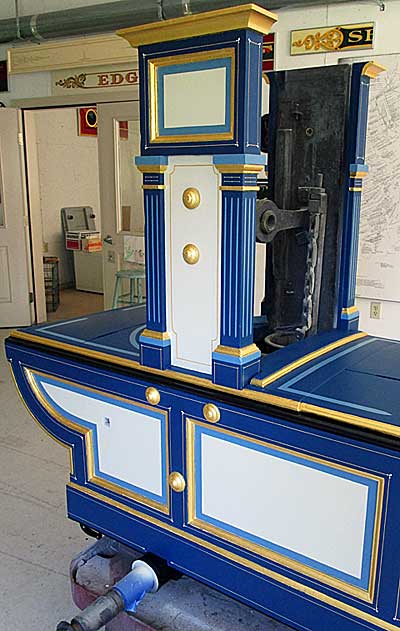
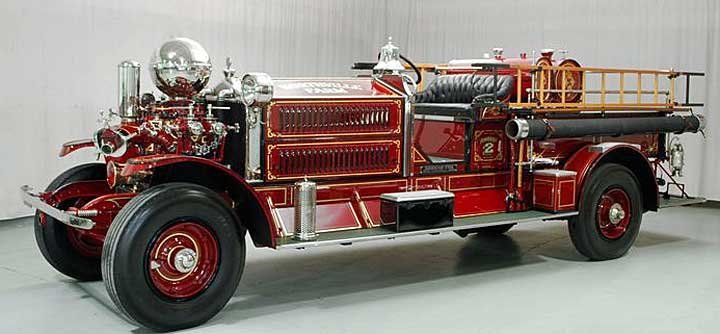

Fire engines were the pride and protectors of their community. They were more than just practical machines. They saved lives and protected entire neighborhoods from the awesome destructive power of fire. Large portions of many cities were leveled by great fires in earlier times. The preciousness of life and the collective responsibility of citizens are symbolized by these vehicles. They are powerful objects when they are in my paint shop, quite different from antique cars or business wagons I have worked on.
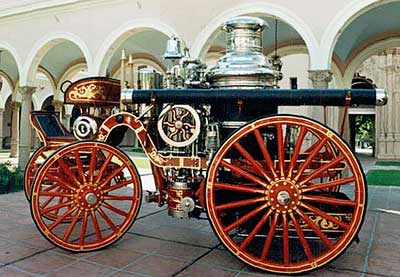

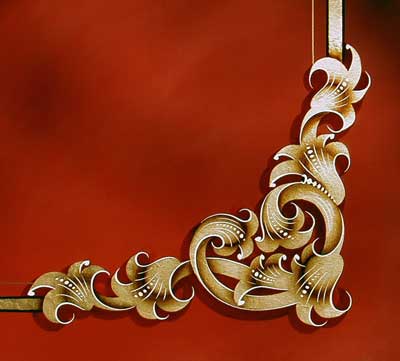
When I was an apprentice sign painter I was told to focus on painted lettering for ten years before learning to gild. This seemed severe at the time, but it prepared me for the demanding techniques needed in restoration work.
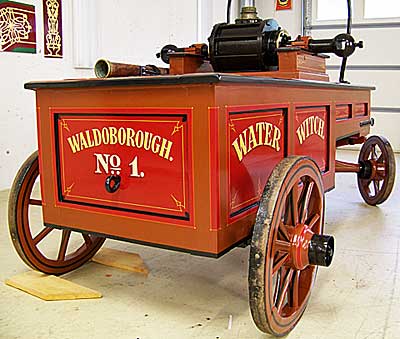
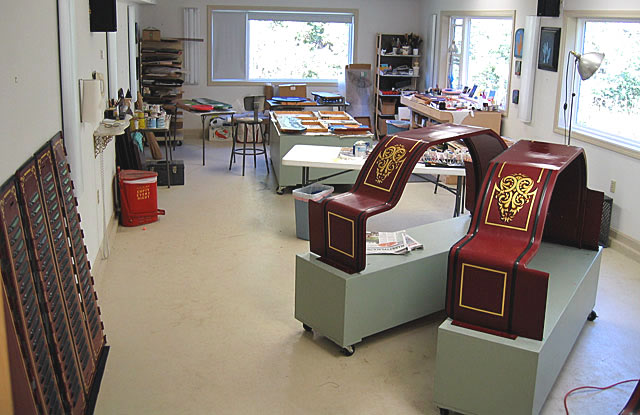
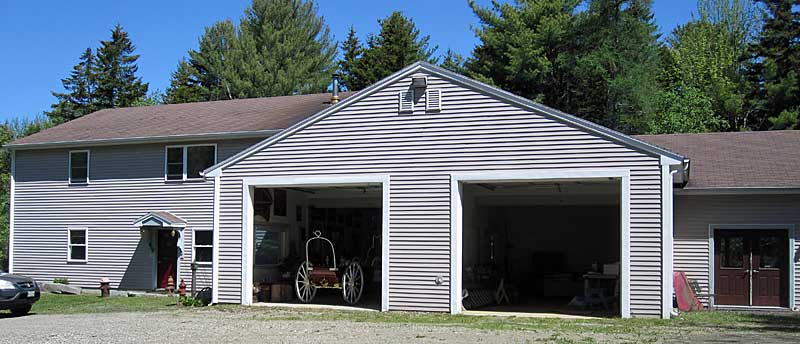






Most antique engines have
been repainted several times. Few owners realize how elaborate their
vehicle looked when it was new. Engines would not leave a factory without decoration, unless the buyer requested to have their local artist do the job. Gold leaf was an important decoration element on almost every engine built from 1800 to 1960.
No gold leaf, or decoration of any kind, appeared on fire engines in colonial America. This was a new phenomenon that began after the War of Independence.
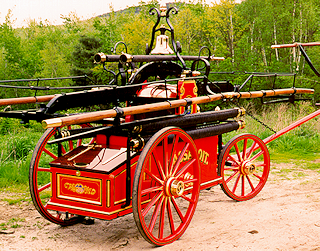
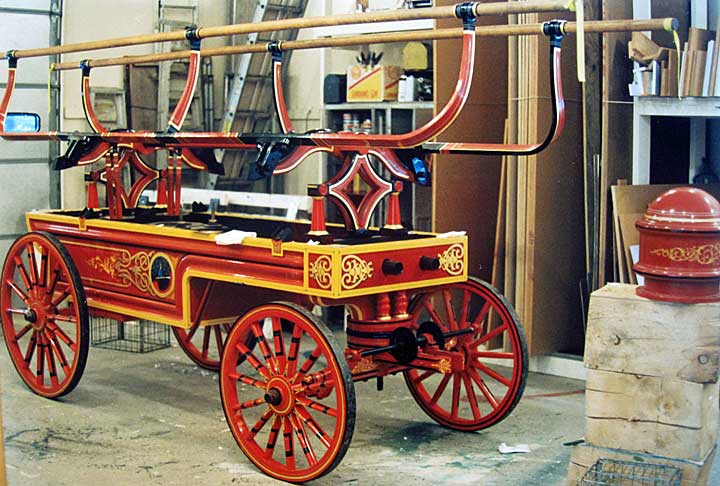

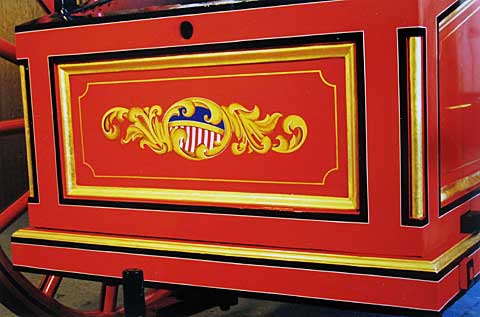
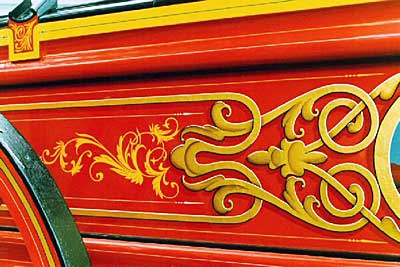
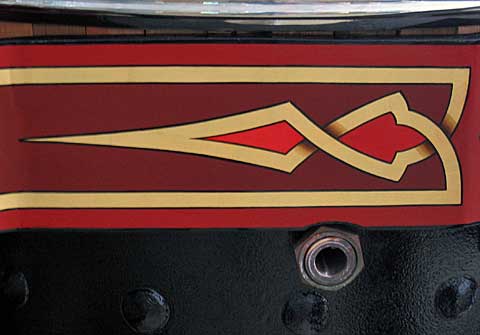
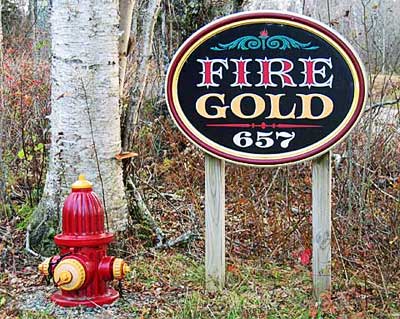

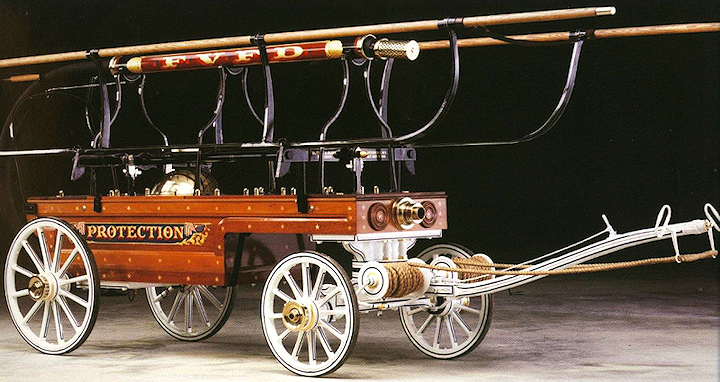
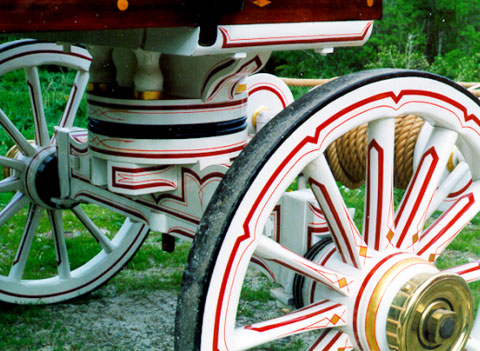
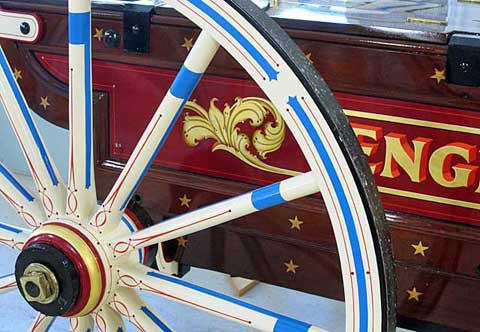
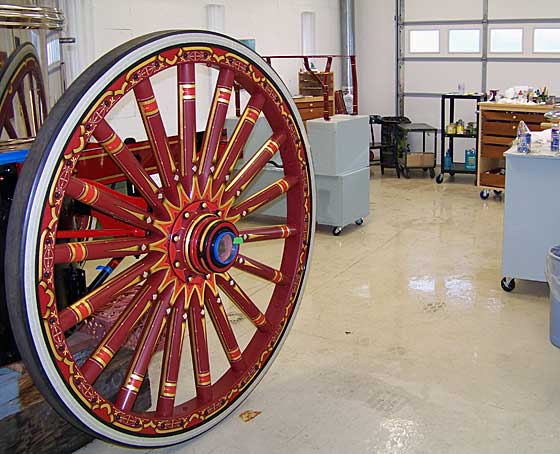
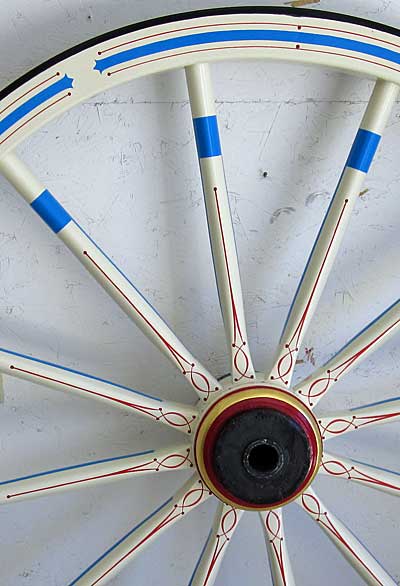
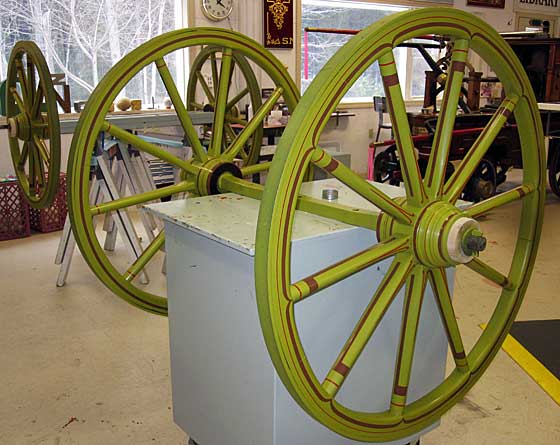
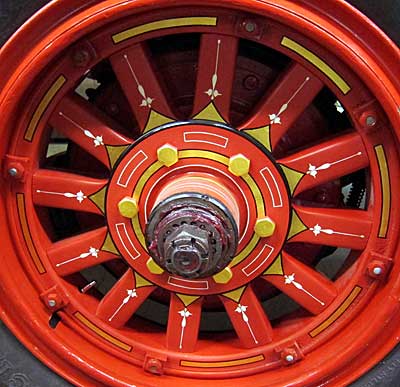
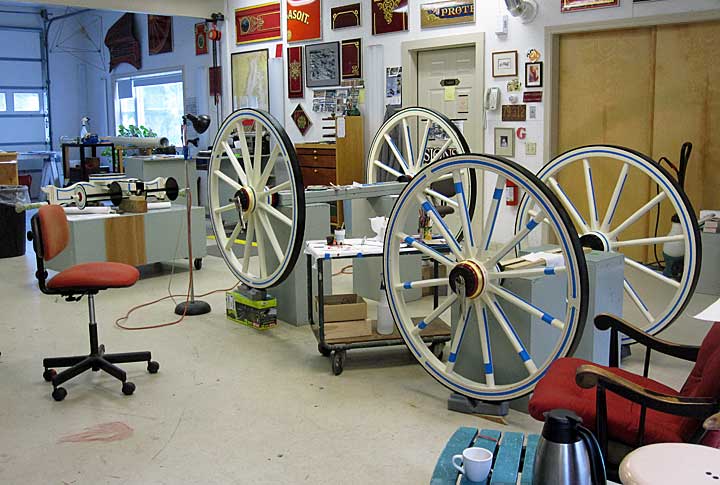

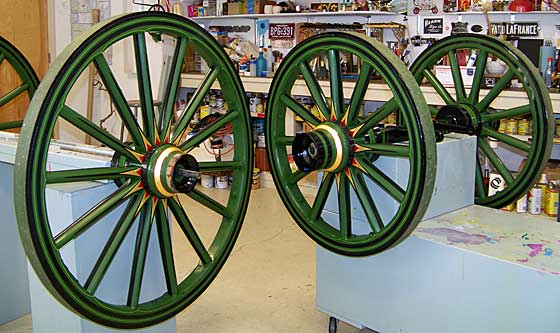
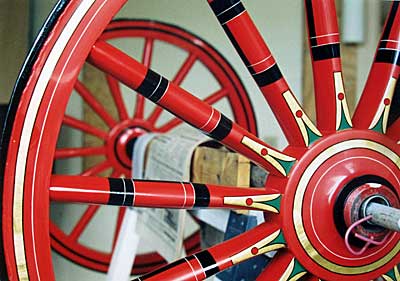
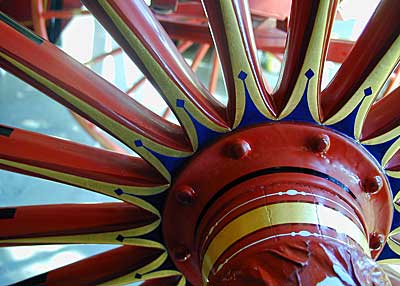

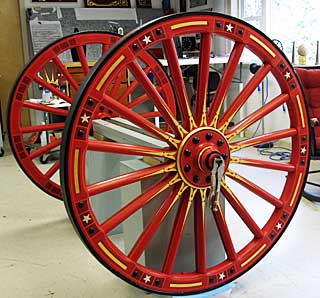
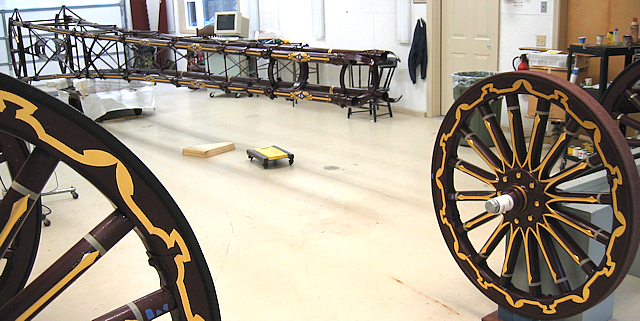



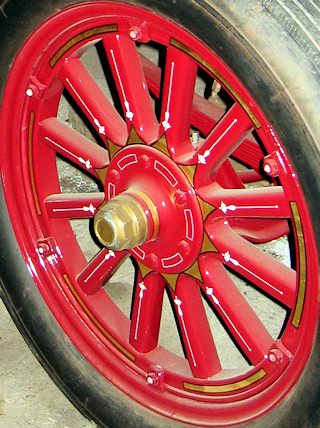

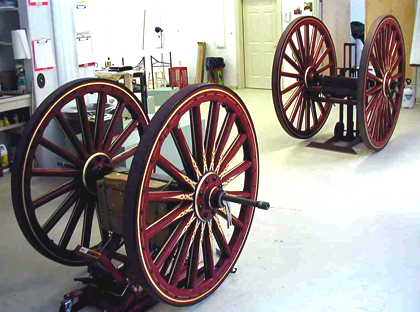
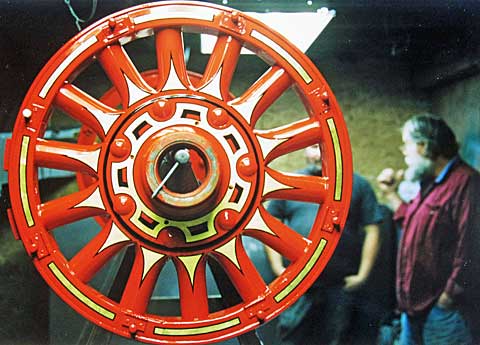
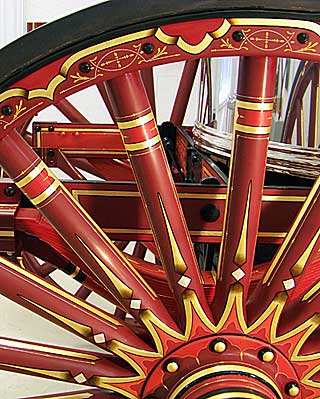
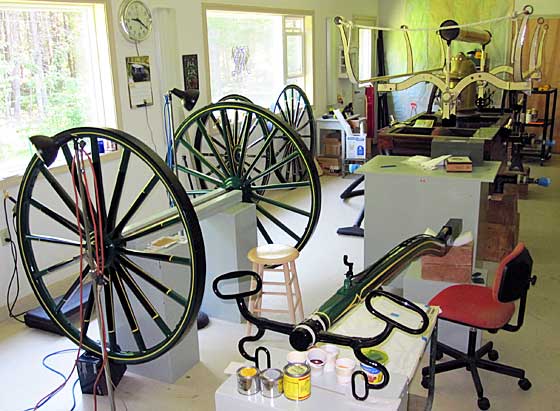
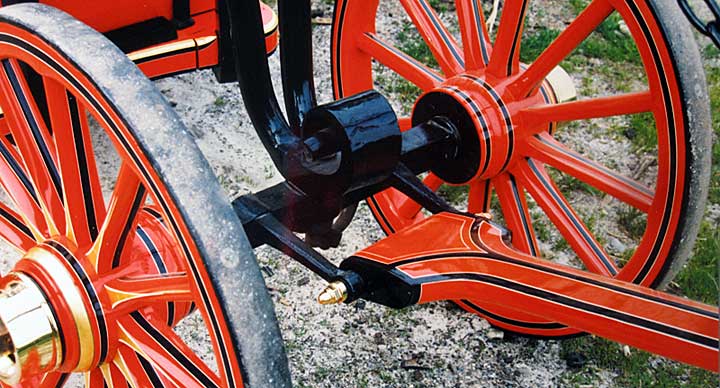
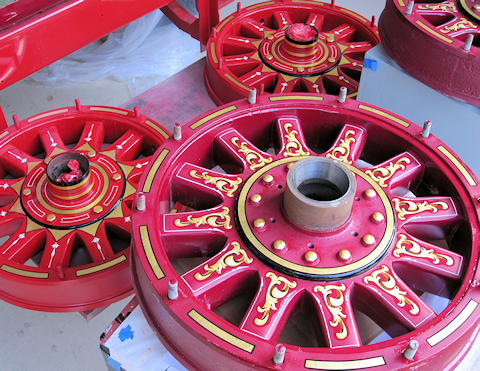
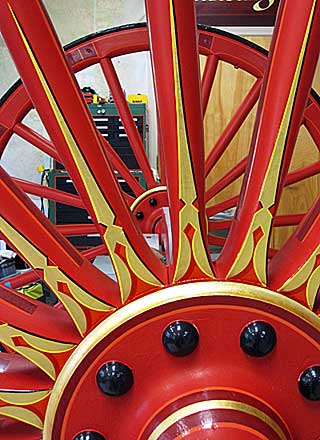

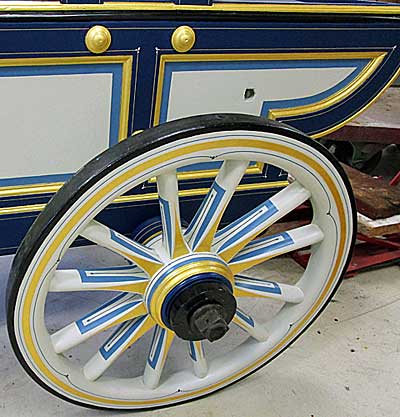
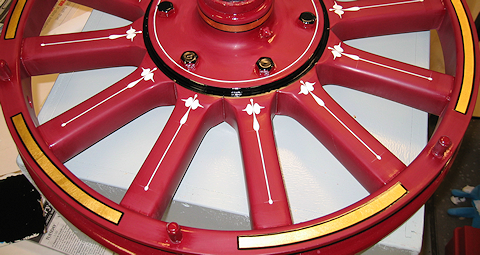
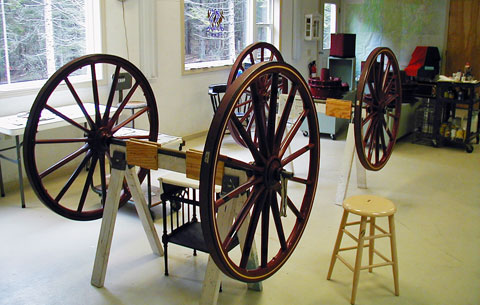
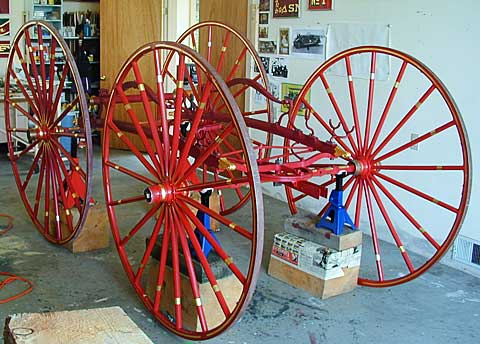


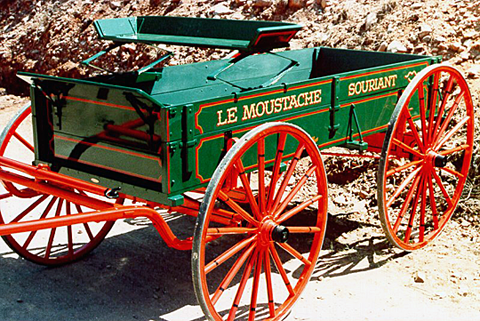
I learned pin-striping at the Southwest Wagon and Wheel Works in Patagonia, Arizona. I have painted stripes and lines on many horse drawn vehicles. There were standards and rules-of-thumb about vehicle striping in the 1800s.
Stripes "narrate" the vehicle, leading your eye along the surfaces and pointing out special features. Early automobile striping followed the traditions from carriage decoration. These same design concepts and elements are found in the decoration on early fire engines.


My shop is located on the coast of Maine. My career for the past 30 years has been balanced between restoring antique fire engine decoration and painting names on boats. My days of painting on location at boat yards have ended. Now I work slowly on the fire engines and help keep alive the trade of hand painted lettering.
